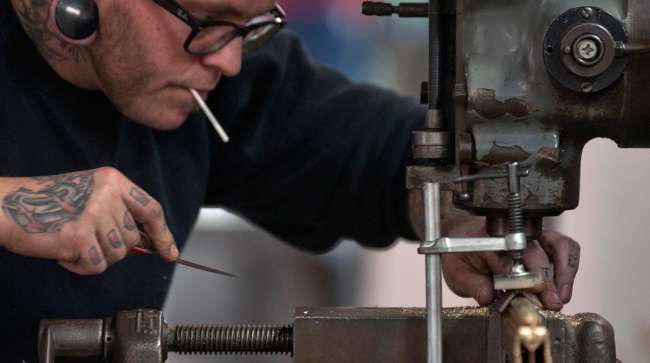US Productivity Unexpectedly Posts First Decline Since 2015

[Stay on top of transportation news: Get TTNews in your inbox.]
Productivity in the U.S. unexpectedly posted the first decline in almost four years and labor costs accelerated, suggesting a pickup in efficiency earlier this year was more of a temporary shift.
Nonfarm business employee output per hour decreased at a 0.3% annualized rate in the third quarter, according to Labor Department figures Nov. 6. That compared with the median projection for a 0.9% increase in Bloomberg’s survey of economists and followed an upwardly revised 2.5% gain in the second quarter. Unit labor costs rose at a 3.6% rate following 2.4% in the prior period.
The decline in productivity resulted from a 2.1% increase in output against a 2.4% rise in hours worked. The Labor Department said self-employed workers “made an unusually large contribution” to the increase in hours worked during the quarter and those particular numbers can be more volatile than for the broader workforce.
While the report partly reflects a deceleration in economic growth during the quarter, it raises questions about whether the Trump administration’s tax cuts, which took effect last year, will sustain a pickup in productivity after already showing signs of failing to prop up business investment.
The quarterly figures tend to be volatile. But productivity gains have been generally weak during the expansion that began in 2009, and the data may represent a return to this pattern after a relatively strong first half.
Broader Debate
There is debate over what has driven the broader slowdown in productivity compared with prior decades. Federal Reserve Chairman Jerome Powell, in a recent speech, suggested several possible reasons, including that official statistics may understate productivity growth by failing to capture the value of fast internet connections and smartphones.
Fed Vice Chairman for Supervision Randal Quarles sees new technologies such as artificial intelligence and 3D printing as having the potential to boost efficiency. Quarles said last week that he was “heartened” by the first-half pickup in productivity growth after years of “abysmal” gains, noting that the trend gave him optimism for the economy’s longer-term potential.
From a year earlier, productivity rose 1.4%, down from 1.8% in the prior period. Unit labor costs were up 3.1% year-over-year — the fastest since early 2014 — which could be a sign that a tight job market is filtering through to what companies are spending on wages.
The report showed inflation-adjusted hourly compensation rose at a 1.4% annual pace during the quarter after a 2% increase.
Want more news? Listen to today's daily briefing:

